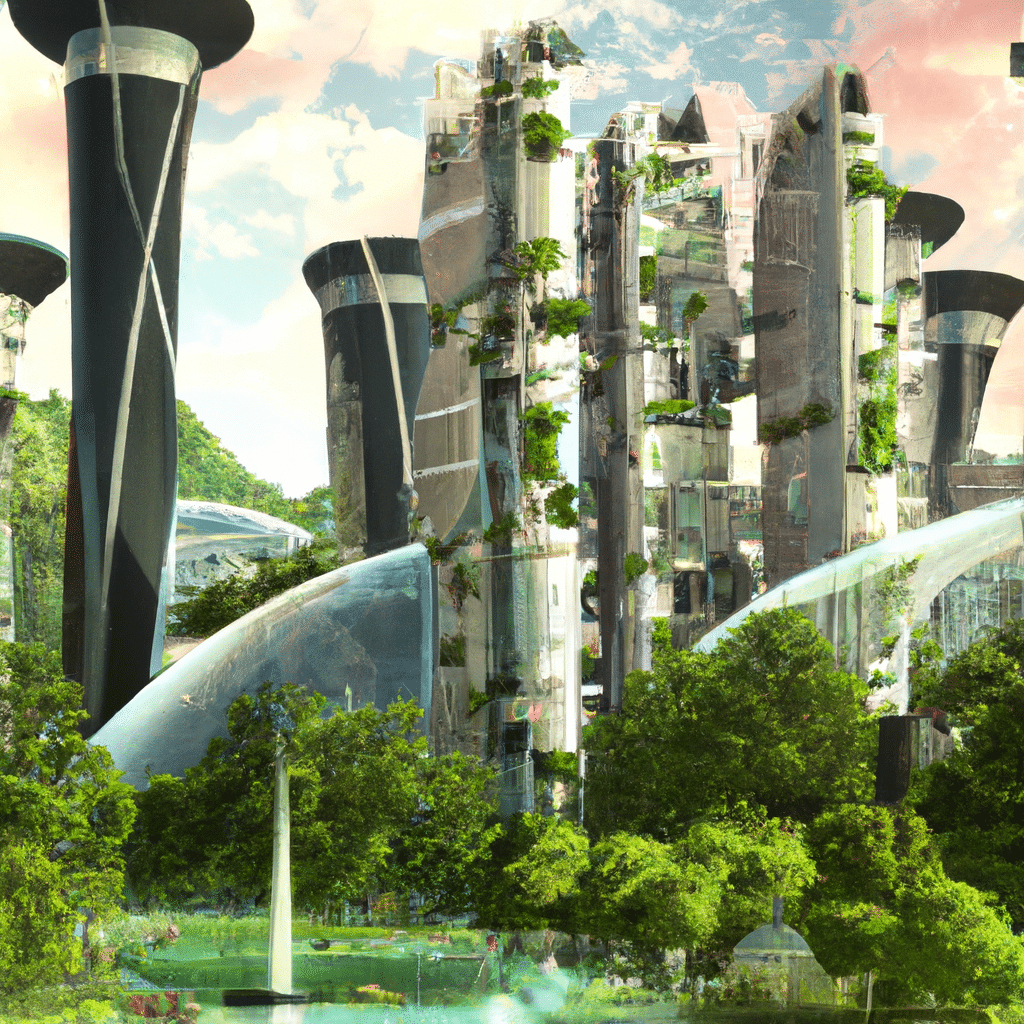AI-powered architecture is the latest trend in the field of sustainable design, and it is taking the industry by storm. This technology is revolutionizing the way architects design buildings, and it has many benefits for the environment and society. In this article, we will explore what AI-powered architecture is, how it works, and its potential impact on sustainable design.

What is AI-powered architecture?
AI-powered architecture is a design approach that uses artificial intelligence to optimize the design process and create more sustainable buildings. This technology uses algorithms to analyze data and generate design solutions that are efficient, cost-effective, and environmentally friendly. AI-powered architecture can be applied to various aspects of the design process, including site selection, building orientation, material selection, and energy use.
How does it work?
The AI-powered architecture design process starts with a data analysis phase. In this phase, the AI algorithm analyzes various data sets, including climate data, building codes, and site conditions, to generate design solutions that are tailored to the specific project. The AI algorithm can also analyze the performance of existing buildings and use that information to improve the design of new buildings.
Once the data analysis phase is complete, the AI algorithm generates a range of design solutions that meet the project’s requirements. These solutions are evaluated based on a set of criteria, including energy efficiency, cost-effectiveness, and environmental impact. The best design solution is then selected, and the final design is created.
The benefits of AI-powered architecture
AI-powered architecture has many benefits for sustainable design. Firstly, it enables architects to create more efficient buildings that use less energy and produce fewer emissions. This technology also allows architects to optimize building performance by considering various factors, such as site conditions, climate data, and building codes.
Secondly, AI-powered architecture can help architects save time and money during the design process. The AI algorithm can generate design solutions quickly and accurately, allowing architects to spend more time on creative aspects of the design process. This technology can also reduce the cost of construction by optimizing building materials and reducing waste.
Finally, AI-powered architecture has the potential to improve the quality of life for building occupants. By creating more sustainable buildings, this technology can improve indoor air quality, reduce noise pollution, and create a healthier living environment.
Potential impact on sustainable design
AI-powered architecture has the potential to transform the field of sustainable design. This technology can help architects create buildings that are more efficient, cost-effective, and environmentally friendly. By considering various factors, such as site conditions, climate data, and building codes, AI-powered architecture can optimize building performance and reduce the environmental impact of buildings.
AI-powered architecture can also help architects design buildings that are more resilient to climate change. By analyzing climate data and predicting future weather patterns, this technology can help architects create buildings that can withstand extreme weather events, such as hurricanes and floods.
In conclusion, AI-powered architecture is the future of sustainable design. This technology has many benefits for the environment, society, and the economy. By using artificial intelligence to optimize the design process, architects can create more efficient, cost-effective, and environmentally friendly buildings that improve the quality of life for building occupants. As this technology continues to develop, we can expect to see more innovative and sustainable building designs in the future.












